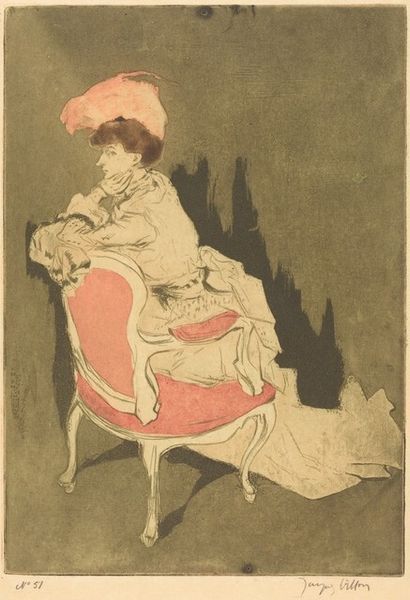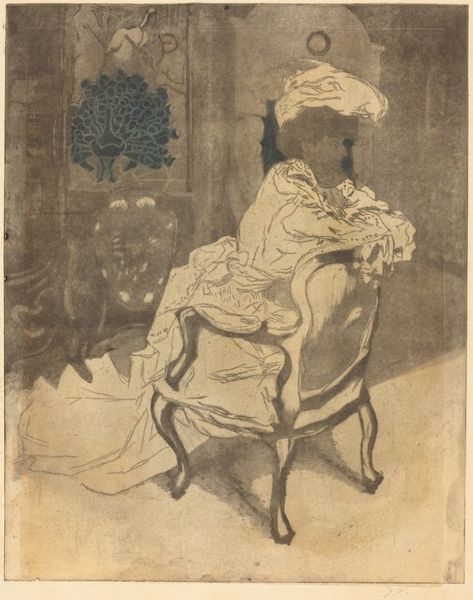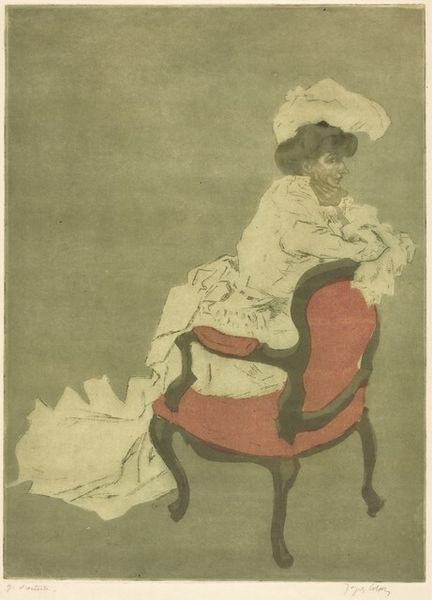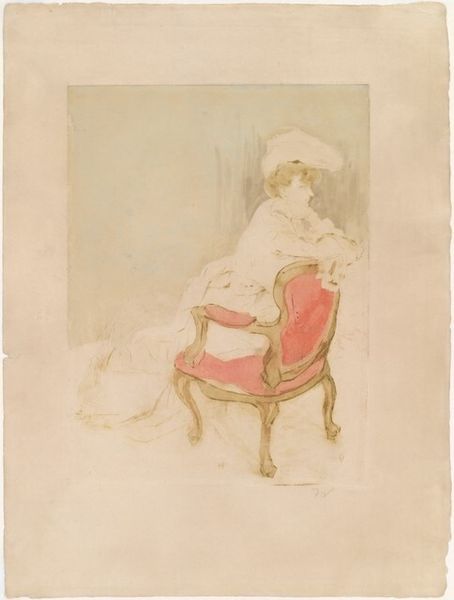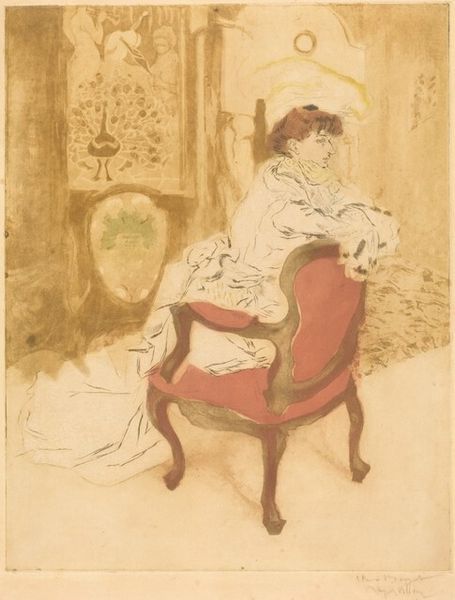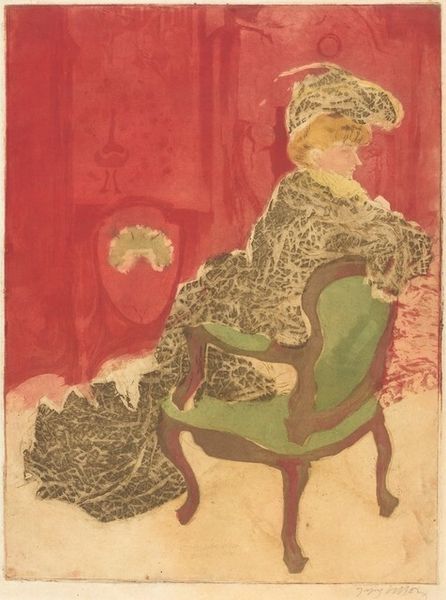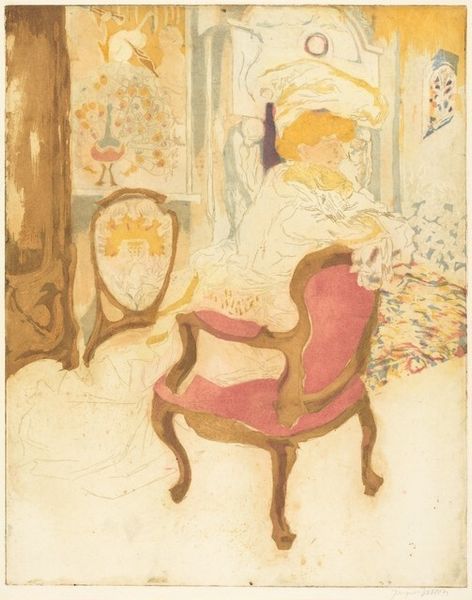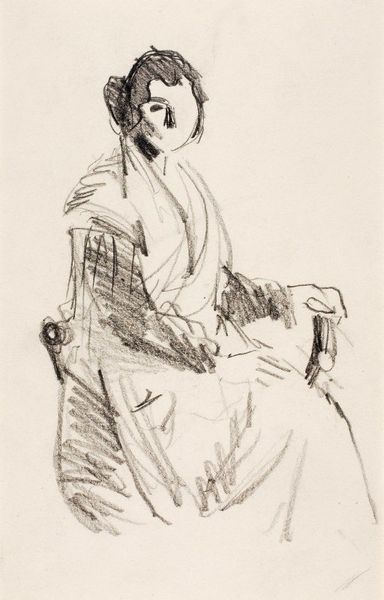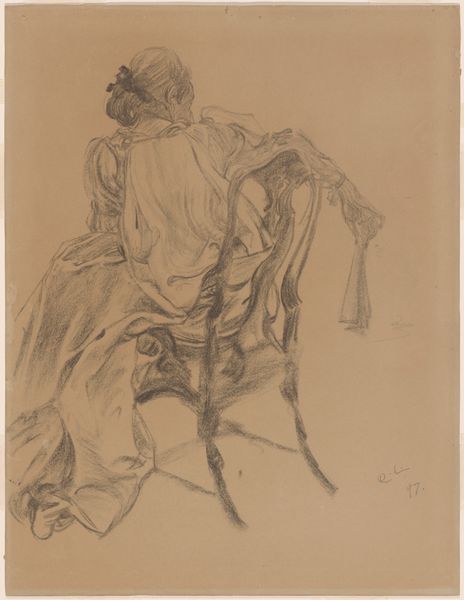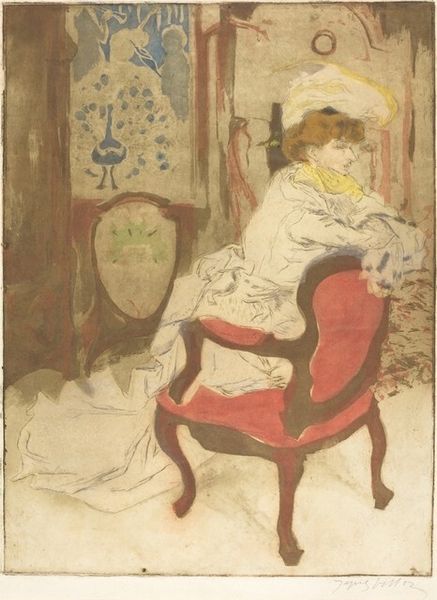
Dimensions: plate: 45.4 x 33.4 cm (17 7/8 x 13 1/8 in.) sheet: 62.2 x 50.1 cm (24 1/2 x 19 3/4 in.)
Copyright: National Gallery of Art: CC0 1.0
Editor: Here we have Jacques Villon's "La Parisienne (18)," created in 1903, rendered as an etching and likely augmented with watercolor and pencil. The woman's profile, and especially that vivid red chair, really grab my attention amidst the more muted tones. How do you interpret this work's composition and color choices? Curator: It is evident that Villon is consciously manipulating the conventions of portraiture. The loose, almost fragmented lines resist a complete depiction, instead emphasizing the process of representation itself. The bold choice of red for the chair, juxtaposed against the softer hues, serves as a crucial anchor. Consider the tension it creates, drawing the eye and destabilizing any straightforward reading of the subject. Editor: So you're saying that the red isn't just a color choice, but it functions structurally within the piece? Curator: Precisely. It operates as a focal point, interrupting what would otherwise be a more harmonious, impressionistic scene. Further, note how Villon employs varied line weights; thicker, darker lines delineate the chair and woman's form, whereas lighter lines create the impression of fabric and background, lending the piece a textural complexity. Are we looking at the social commentary of post-impressionism, or just an artistic arrangement? Editor: That's fascinating; I was so focused on the overall mood that I hadn’t considered how the elements themselves were working against each other. I learned to read that a lot better! Curator: And hopefully, with these visual tools, a richer viewing experience awaits.
Comments
No comments
Be the first to comment and join the conversation on the ultimate creative platform.

